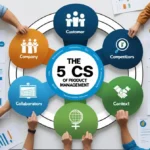- January 28, 2025
- by uyuwh
- Blog
- 0 Comments
When it comes to hiring for product leadership positions, it’s essential to assess not only the candidate’s technical expertise but also their ability to drive strategic decisions, foster innovation, and lead cross-functional teams. The role of a product leader, whether it’s a Product Manager, Director of Product, or VP of Product, is pivotal in aligning the organization’s vision with its execution. But how do you assess the right fit during an interview?
To help guide you through the hiring process, we’ve put together six key product leadership interview questions that can help uncover whether a candidate has the right blend of leadership, technical acumen, and strategic thinking. Along with each question, we’ve also provided detailed sample answers that highlight the qualities you should look for. Let’s learn the 6 product leadership interview questions and answers.
Table of Contents
1. Tell us about a time when you successfully led a product from concept to launch. What were the biggest challenges you faced, and how did you overcome them?
Why this question matters:
Product leadership often requires navigating the entire lifecycle of a product — from ideation to launch. This question assesses a candidate’s ability to manage the complex dynamics of product development, making strategic decisions along the way.
What to look for in an answer:
Look for candidates who not only highlight the product journey but also provide insight into their problem-solving abilities. The best answers should cover how they worked with cross-functional teams, navigated obstacles, and aligned stakeholders around the product vision.
Sample answer:
“In one of my previous roles, I led the development of a new mobile application aimed at simplifying e-commerce for small businesses. One of the biggest challenges was ensuring that the product met both the user’s needs and our company’s business objectives. We faced several hurdles, from limited resources to shifting market demands, but I worked closely with the product design team to iterate quickly based on user feedback, and I coordinated with marketing to align on a go-to-market strategy. By staying customer-focused and agile, we launched the product on time, and it achieved a 30% increase in sales within the first quarter.”
2. How do you prioritize product features when you have limited resources?
Why this question matters:
Product leadership often requires making tough choices regarding feature prioritization. This question evaluates the candidate’s ability to balance strategic goals with practical constraints, such as time, budget, and team capacity.
What to look for in an answer:
An ideal response will include a framework for prioritization, such as the MoSCoW method, RICE scoring, or similar tools. You should also hear about how the candidate aligns their decisions with business goals and user needs, and how they communicate these choices to stakeholders.
Sample answer:
“Prioritizing product features involves considering several factors: business impact, user needs, and technical feasibility. For example, I often use the RICE framework — where I rate features based on Reach, Impact, Confidence, and Effort. I also involve key stakeholders in these discussions to ensure that we’re focusing on features that not only drive revenue but also improve customer satisfaction. When resources are limited, I make tough trade-offs by focusing on the high-impact features that deliver the most value, and I continuously communicate trade-offs to the team to keep everyone aligned.”
3. Can you describe your experience with managing cross-functional teams, and how do you ensure alignment between product, design, engineering, and other departments?
Why this question matters:
Product leaders need to orchestrate collaboration between diverse teams. This question gauges the candidate’s leadership and communication skills, and their ability to work across functions to ensure that everyone is moving in the same direction.
What to look for in an answer:
A strong candidate will show how they’ve established processes or frameworks that promote collaboration. They should also share how they ensure all departments have a voice in the decision-making process, while also keeping teams aligned to the product vision.
Sample answer:
“Throughout my career, I’ve worked closely with cross-functional teams, from product design to engineering and marketing. One of the key strategies I use to ensure alignment is through regular sprint planning meetings where all stakeholders provide input. I also leverage collaborative tools like Jira and Slack to maintain open lines of communication. Beyond the tactical side, I make sure that everyone understands the ‘why’ behind decisions and that their feedback is valued. By creating a culture of transparency and ownership, the team works together towards a unified goal.”
4. What role does data play in your decision-making process? Can you provide an example of how data influenced a product decision you made?
Why this question matters:
Data-driven decision-making is a crucial skill for modern product leaders. This question helps you assess how the candidate uses data to validate assumptions, measure progress, and make informed choices.
What to look for in an answer:
Look for candidates who not only rely on data but also know how to interpret and act on it. A great answer will demonstrate how they used data to inform key decisions, whether it was validating product-market fit or optimizing a product feature based on user behavior.
Sample answer:
“Data plays a critical role in my decision-making process. I always start by collecting quantitative and qualitative data to ensure we’re solving the right problem. For example, when we launched a new feature for a web application, the initial user feedback was mixed. By looking at user engagement metrics and conducting user interviews, I realized that the feature wasn’t meeting our core user’s needs. Based on the data, we decided to pivot the feature and introduce additional customization options, which increased user retention by 25% in the following quarter.”

5. How do you stay ahead of industry trends, and how do you incorporate new technologies or practices into your product strategy?
Why this question matters:
Product leaders must be forward-thinking and aware of emerging trends and technologies. This question evaluates the candidate’s ability to innovate and stay competitive in a fast-moving environment.
What to look for in an answer:
Look for candidates who demonstrate a proactive approach to staying informed, such as attending industry conferences, reading industry reports, or experimenting with new tools and methodologies. They should also explain how they integrate these trends into their product strategy.
Sample answer:
“Staying ahead of industry trends is a priority for me. I regularly attend product management conferences, follow thought leaders in the tech space, and participate in online forums where new tools and techniques are discussed. For instance, I’ve recently been exploring the potential of AI to improve personalization in our products. I’ve already implemented some AI-driven features in our roadmap, and we’re seeing early signs of increased user satisfaction. By staying informed and continuously evaluating new technologies, I ensure that our products remain at the forefront of the market.”
6. How do you handle product failures or setbacks? Can you share an example of how you turned a failure into a learning experience?
Why this question matters:
No product development journey is without setbacks. This question helps assess how resilient and adaptable a candidate is, as well as their ability to learn from mistakes and pivot when necessary.
What to look for in an answer:
The best candidates will take ownership of failures, demonstrate their problem-solving skills, and highlight how they turned challenges into opportunities for growth. Look for answers that show a growth mindset and a focus on continuous improvement.
Sample answer:
“In one project, we launched a feature that we believed would significantly improve user engagement, but the uptake was much lower than expected. Instead of seeing it as a failure, I viewed it as an opportunity to learn. We gathered user feedback, analyzed the data, and realized the feature wasn’t addressing the core problem users faced. We pivoted quickly by refining the feature and re-launching it with a more targeted approach. The result was a 40% increase in adoption. I believe failures are just stepping stones to improvement, and the key is to be agile and learn from every experience.”
Conclusion
Hiring a product leader is a crucial decision that can significantly impact the success of your company. By asking these six product leadership interview questions, you can assess a candidate’s ability to navigate the complexities of product development, lead diverse teams, and make data-driven decisions. Whether you’re building a new product from scratch or scaling an existing one, the right product leader will bring the vision, strategy, and execution needed to propel your business forward.
If you need further guidance on hiring the right product leader for your business or looking for assistance with product management, design, or development, feel free to reach out to us at Yathu Karunailingam. We specialize in crafting tailored product solutions that drive growth and innovation.





